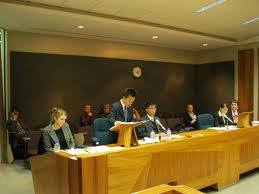“SREE” v Industry R&D Board [1999]
April 15th, 2014The taxpayer was a large Australian bank that had spent considerable sums of money on the development of a computer system. It claimed that the money spent should be deductible as R&D within the meaning of s 73B of the Income Tax Assessment Act (ITAA) 1936.
The commissioner, after reviewing a determination received from the Industry R&D Board found that the amount was not deductible as the software was for internal use of the bank, and therefore excluded from the definition of R&D by s 73B(2).
The taxpayer appealed to the AAT for a review of the R&D Board’s decision claiming that the purpose of sale did not need to be the sole or dominant or originating purpose.
Background
-
The claimed activities were the development of computer software – primarily for in-house application. These activities were carried out before 1988. The board argued in this case that under old legislation, the term ‘the purpose’ meant ‘the ruling, prevailing or most influential purpose’.
-
Since then, the legislation has changed and now quite clearly states that computer software must be developed for the purpose or for purposes that include the purpose of sale, rent, licence, hire or lease to two or more non-associates.
-
The purpose of a taxpayer is an important concept elsewhere in the R&D legislation, and in other tax statutes. The case is also relevant because it addressed issues of evidence.
-
The formal records of the company’s Board were not conclusive in identifying the purpose of the activities. Other documents of the company were used by the IR&D Board to argue that the purpose of the work was the bank’s in-house work.
-
The Deputy President found that a concurrent and substantial purpose involving an intention to market elsewhere was amply demonstrated by contemporaneous documents, and in the conversations of relevant officers. The system was designed at a level of generality beyond the needs of the bank’s own business; and the bank’s rights to a marketable system were protected. There was a joint marketing approach to American banks and the appointment of a marketing manager.
Decision
-
The court decided that the activities constituted R&D.
-
In order to qualify as R&D it was not necessary that the dominant or actuating purpose of the activity was sale or profit, as there may be a number or multiplicity of purposes, and it is necessary only that the taxpayer show that one of the purposes found in s 73B(2) was a collateral or relevant purpose that was not an insubstantial purpose in conducting the activity.
-
In seeking to discern a corporate purpose in a large organisation evidence may be adduced as to the purposes of the Board of Directors and any managers to whom the board may have delegated decision making power.
-
In determining whether a collateral or relevant purpose existed for purposes of tax deductibility it is necessary that the taxpayer establish that such a purpose existed in the course of a year of income, rather than being required to demonstrate that the purpose existed throughout the whole of the year.
Click here to view the SREE and Industry Research and Development Board Case.
Categories
- ATO Guidance and Materials
- AusIndustry Guidance and Materials
- Case Law
- Federal Budget 2021
- Federal Budget 2022
- For Accountants
- General Information
- Government Policy and Treasury
- Industry Specific Issues
- Interpretative Decisions
- Legislation and Parliamentary Matters
- R&D Tax Credit
- R&D Tax Funding Strategies
- R&D Tax Loans
- Recent News
- Tax Determinations
Archives
- April 2024
- March 2024
- February 2024
- January 2024
- December 2023
- November 2023
- October 2023
- September 2023
- August 2023
- July 2023
- June 2023
- May 2023
- April 2023
- March 2023
- February 2023
- January 2023
- December 2022
- November 2022
- October 2022
- September 2022
- August 2022
- July 2022
- June 2022
- May 2022
- April 2022
- March 2022
- February 2022
- January 2022
- December 2021
- November 2021
- October 2021
- September 2021
- August 2021
- July 2021
- June 2021
- May 2021
- April 2021
- March 2021
- February 2021
- January 2021
- December 2020
- November 2020
- October 2020
- September 2020
- August 2020
- July 2020
- June 2020
- May 2020
- April 2020
- March 2020
- February 2020
- January 2020
- December 2019
- November 2019
- October 2019
- September 2019
- August 2019
- July 2019
- June 2019
- May 2019
- April 2019
- March 2019
- February 2019
- January 2019
- December 2018
- November 2018
- September 2018
- July 2018
- June 2018
- May 2018
- April 2018
- March 2018
- February 2018
- January 2018
- December 2017
- November 2017
- September 2017
- August 2017
- July 2017
- June 2017
- May 2017
- April 2017
- March 2017
- February 2017
- January 2017
- December 2016
- November 2016
- October 2016
- September 2016
- August 2016
- July 2016
- June 2016
- May 2016
- April 2016
- March 2016
- February 2016
- January 2016
- December 2015
- November 2015
- October 2015
- September 2015
- August 2015
- July 2015
- June 2015
- May 2015
- April 2015
- March 2015
- February 2015
- January 2015
- November 2014
- October 2014
- September 2014
- August 2014
- July 2014
- June 2014
- May 2014
- April 2014
- March 2014
- February 2014
- January 2014
- December 2013
- November 2013
- October 2013
- September 2013
- May 2013
- April 2013
- March 2013
- September 2012
- August 2012
- June 2012


 Free Call: 1300 009 390
Free Call: 1300 009 390






 News & Research
News & Research



